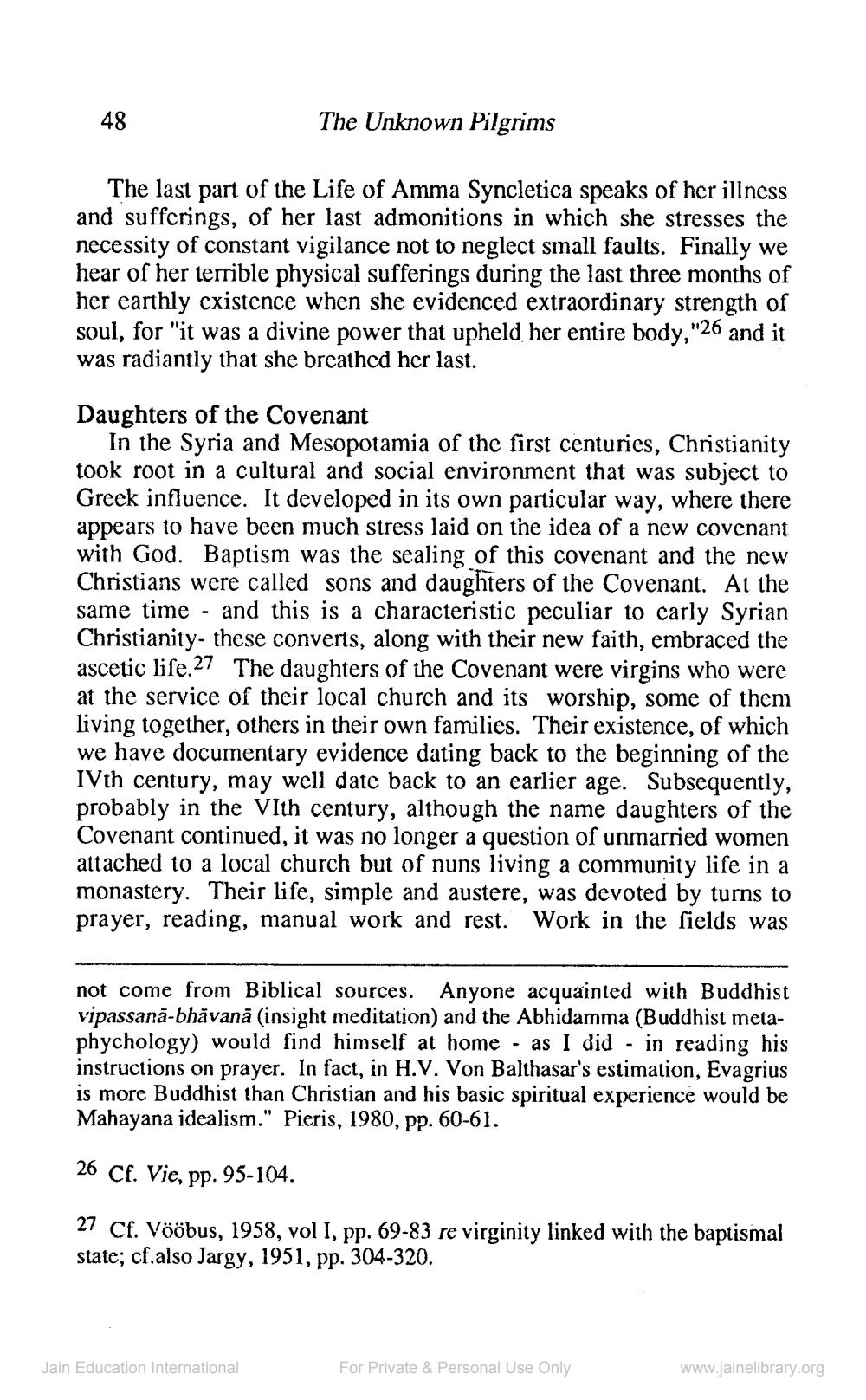________________
48
The Unknown Pilgrims
The last part of the Life of Amma Syncletica speaks of her illness and sufferings, of her last admonitions in which she stresses the necessity of constant vigilance not to neglect small faults. Finally we hear of her terrible physical sufferings during the last three months of her earthly existence when she evidenced extraordinary strength of soul, for "it was a divine power that upheld her entire body,"26 and it was radiantly that she breathed her last.
Daughters of the Covenant
In the Syria and Mesopotamia of the first centuries, Christianity took root in a cultural and social environment that was subject to Greck influence. It developed in its own particular way, where there appears to have been much stress laid on the idea of a new covenant with God. Baptism was the sealing of this covenant and the new Christians were called sons and daughters of the Covenant. At the same time - and this is a characteristic peculiar to early Syrian Christianity- these converts, along with their new faith, embraced the ascetic life.27 The daughters of the Covenant were virgins who were at the service of their local church and its worship, some of them living together, others in their own families. Their existence, of which we have documentary evidence dating back to the beginning of the IVth century, may well date back to an earlier age. Subsequently, probably in the VIth century, although the name daughters of the Covenant continued, it was no longer a question of unmarried women attached to a local church but of nuns living a community life in a monastery. Their life, simple and austere, was devoted by turns to prayer, reading, manual work and rest. Work in the fields was
not come from Biblical sources. Anyone acquainted with Buddhist vipassanā-bhāvanā (insight meditation) and the Abhidamma (Buddhist metaphychology) would find himself at home - as I did - in reading his instructions on prayer. In fact, in H.V. Von Balthasar's estimation, Evagrius is more Buddhist than Christian and his basic spiritual experience would be Mahayana idealism." Pieris, 1980, pp. 60-61.
26 Cf. Vie, pp. 95-104.
27 Cf. Vööbus, 1958, vol I, pp. 69-83 re virginity linked with the baptismal state; cf.also Jargy, 1951, pp. 304-320.
Jain Education International
For Private & Personal Use Only
www.jainelibrary.org




